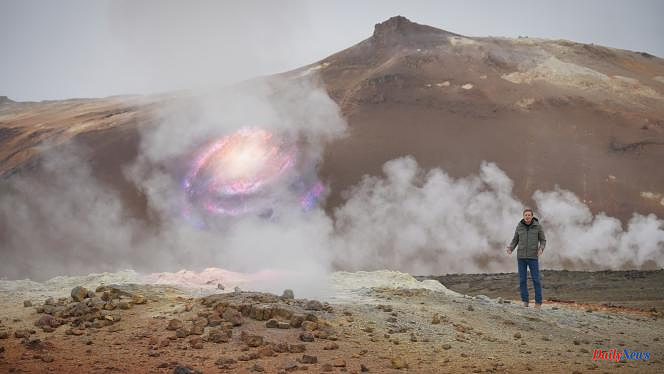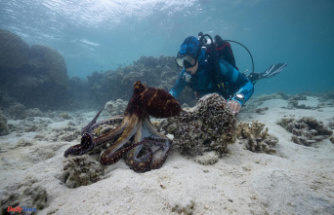If we have to recommend On the Other Side of the Moon, a documentary that François-Xavier Vives is devoting to the new exploration phase of our satellite, which began a few years ago, it will be for… its model exploitation of all the easily popularized tics and tricks. It starts with the superlative fiesta from the first minutes - "revolutionizes our knowledge"; "real electric shock"; "scientific prowess"; "massive project" - as if science had to dazzle to hide its rough edges.
We continue with the utopia of an all-powerful technology that would allow a rapid colonization of our satellite and a hunt for cosmic "treasures" that are the potential resources of the Moon and asteroids. Little is said, however, about the colossal technical difficulties of these futuristic projects and, above all, about their usefulness.
The main question that this film raises does not concern so much what is said as the way of saying it: how to renew the form of the popular science documentary? How not to fall into a sympathetic, but simplistic, wonder at the march of progress? How to reinvent the genre, get out of "boat" subjects and stage the complexity, if not the originality, of certain research? How, finally, what is probably the most complicated, to trust the intelligence of the viewer? Recall that the same author, François-Xavier Vives, achieved this in 2015 with a remarkable film on the science of folding, entitled Un monde en plis: le code origami.
Ethical issues
That said, if we stick to the surface of things, if we don't wince at the agreed recipe, On the other side of the Moon ticks all the right boxes of a classic documentary: a narrator - sympathetic protagonist, scientist himself, in the person of Christophe Galfard, former student of the British astrophysicist Stephen Hawking (1942-2018); walks on exotic sites (Iceland, Hawaii…); endorsement by recognized researchers; a skilful alternation between photographs taken from the robotic exploration of our satellite and computer-generated images…
Beautiful work, if we consider, moreover, that the main scientific themes are all covered. We thus approach the legacy left by the American Apollo program, the major geological questions (difference between the two sides of our satellite, volcanism, presence of water ice in the ground), the challenges posed by the return of humans to the Moon, without forgetting the possible exploitation of the resources that celestial bodies other than the Earth conceal, with its procession of ethical questions.
We appreciate that the documentary filmmaker was able to go to China to interview the various actors of the Chang'e lunar program which, for the past fifteen years, have multiplied the successes, with in particular the first landing of a rover on the hidden face of the Moon in 2019 and the return of samples at the end of 2020. These interviews (sometimes tinged with a touch of Chinese propaganda…) constitute a small feat when we know the lack of enthusiasm that Beijing puts into opening the doors of its space program to western media.












